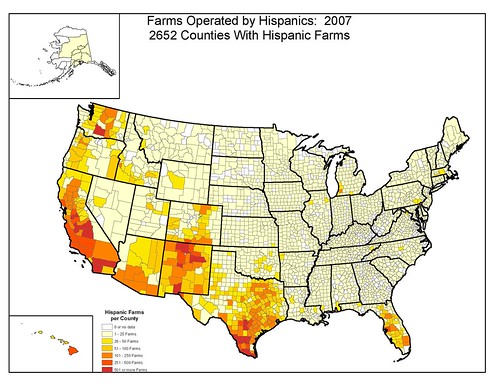The whole nation is celebrating the Hispanic Heritage Month, honoring numerous achievements and contributions made by the Hispanic-Americans in many industries, including agriculture.
Farm operators of Hispanic, Latino and Spanish origin now comprise 2.5 percent of all farmers and ranchers in the United States, according to the most recent Census of Agriculture, conducted by the U.S. Department of Agriculture’s National Agricultural Statistics Service (NASS). According to these data, there are 66,671 farms with Hispanic operators, covering more than 24.6 million acres of U.S. farmland. The states with the highest percentages of Hispanic-operated farms are New Mexico, California and Texas. Hispanic farmers and ranchers are also becoming more diverse as a group. The latest census data showed that 12 percent of all Hispanic operators are women.

Hispanic farmers and ranchers are active participants in all facets of U.S. agriculture today. In 2007, they sold more than $12.7 billion worth of agricultural products from their farms and ranches. The most common type of operation among Hispanic famers and ranchers is cattle production, accounting for nearly a third of all farms with Hispanic or Latino operators. While less than one-quarter of Hispanic farms produce specialty crops, which include fruits, vegetables, and nursery and greenhouse products, these operations account for almost half the value of sales from Hispanic operations.
NASS conducts the Census of Agriculture every five years, with the next census scheduled for 2012. The census is the most reliable source of detailed data about every aspect of U.S. agriculture. It is also the only complete source of U.S. farmers and ranchers’ demographic information. To learn more about the census, click here.


